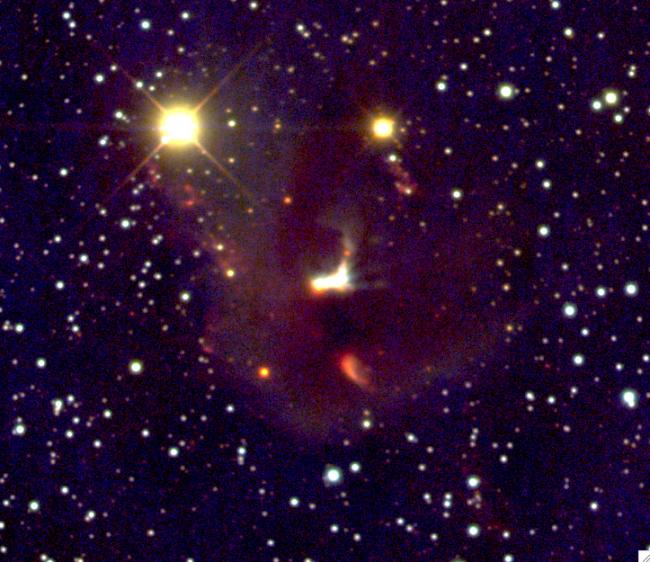
An optical image of a Bok globule, a dark cloud of gas and dust in which a young star is forming. A new paper reports on young stars forming inside these small clouds.
Bok globules are small interstellar clouds of very cold gas and dust that are so thick they are nearly totally opaque to visible light, although they can be studied with infrared and radio techniques. They were originally discovered as black splotches in front of dense fields of stars, and were even dubbed "holes in the heaven" because they appeared like holes in the stellar background. Bok globules are typically less than 100 solar-masses in size, are relatively isolated, and often contain cores thought to be the embryos of new stars. It is this last feature that makes Bok globules particularly interesting to astronomers who want to use their relative simplicity to examine the very early stages of star formation under conditions much less confused than those in giant molecular cloud complexes like the Orion Nebula. Moreover, the nearest Bok globules are as much as four times closer than the closest giant complexes, allowing more detailed observations.
CfA astronomer Tyler Bourke was part of an international team of nine scientists who studied thirty-two Bok globules with a suite of infrared, submillimeter, and millimeter telescopes, including the Spitzer Space Telescope. They report in this month’s Astrophysical Journal Supplement that warm cores were found in twenty-six of these globules, and eighteen of them could be approximately age dated based on their dust emission characteristics, and are from about one hundred thousand to two million years old. Moreover, the team found that nearly two-thirds of these globules showed evidence of multiple stars, and in most of these cases the several stars appeared to be of different ages, with only three cases of coeval young stars. This latter result suggests that slow, sequential star formation is underway in these relatively isolated dark clouds.